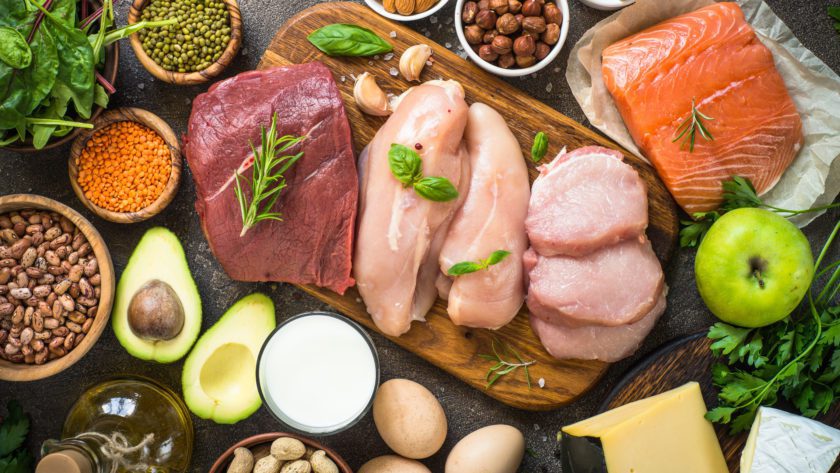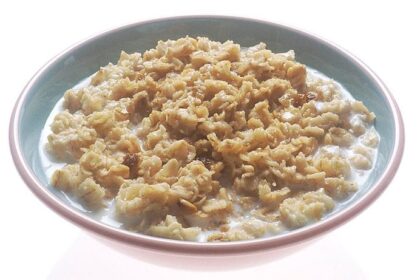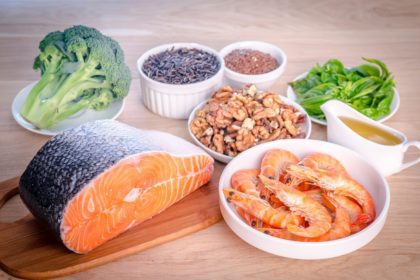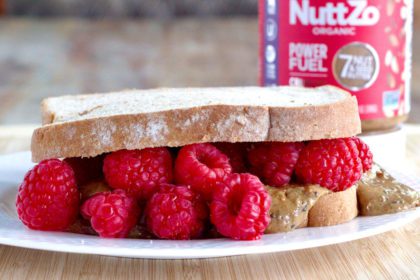This is a follow-up to our previous KRON 4 segment: Blood Sugar Impacts Immune Response to COVID-19.
Last week we discussed how high blood sugar impacts the immune response to COVID-19 and how it affects those with and without diabetes.
Here are some diet strategies that prevent or blunt blood sugar spikes — and therefore, reduce the risk of a life-threatening inflammatory reaction to the coronavirus.
Why Blood Sugar Causes Inflammation
Prolonged high blood sugar is associated with chronic inflammation.
Think of blood sugar as shards of glass circulating in the blood. As it makes its way through your artery, it is damaging the very delicate inner lining of the arteries (the endothelium).

Tissue injury is followed by a series of biochemical events that result in the release of pro-inflammatory cytokines (immune cells) to help stop further tissue injury and start the healing phase.
These are the same pro-inflammatory immune cells that I talked about last week — the ones that go into overdrive when blood sugar is high in the presence of COVID-19 and referred to as the “cytokine storm”.
See KRON 4 segment: Blood Sugar Impacts Immune Response to COVID-19
Why Blood Glucose Results Can Provide a False Sense of ‘Healthy’
When testing for diabetes, the blood glucose test is performed when fasting, but the blood sugar spikes occur after eating (postprandial).
Blood glucose will continue to rise and peak at 1.5 hours.
These spikes may not show up when your doctor tests your blood sugar since you’re tested in the lab before you eat. You live most of your life in a fed state, not a fasting state.
Key Diet Strategies to Survive COVID-19
Your diet is a strong moderator of inflammation. To lower risk for the deadly cytokine storm, aim to:
- Prevent blood sugar spikes
- Reduce inflammation
- Improve insulin sensitivity (Insulin sensitivity refers to how responsive your cells are to insulin. When cells are insensitive or resistant to insulin, glucose can’t get into the muscle cells, so it builds up in the blood.)
Which is the Better Meal?
Refined, low fiber foods are digested very quickly into sugar and released into the blood causing blood sugar spikes.
The pancreas then releases insulin — the key to transporting the sugar from the blood into the cells.
Would combining refined white bread with chicken be better for your blood sugar than peanut butter and jelly?
QUESTION: Which meal do you think will spike your blood sugar and produce more inflammation?
- A peanut butter and strawberry jam sandwich* on refined white bread? OR
- A poached skinless chicken sandwich on refined white bun?
*The PB&J is made with natural peanut butter (just peanuts) and the jam is made with all fruit.
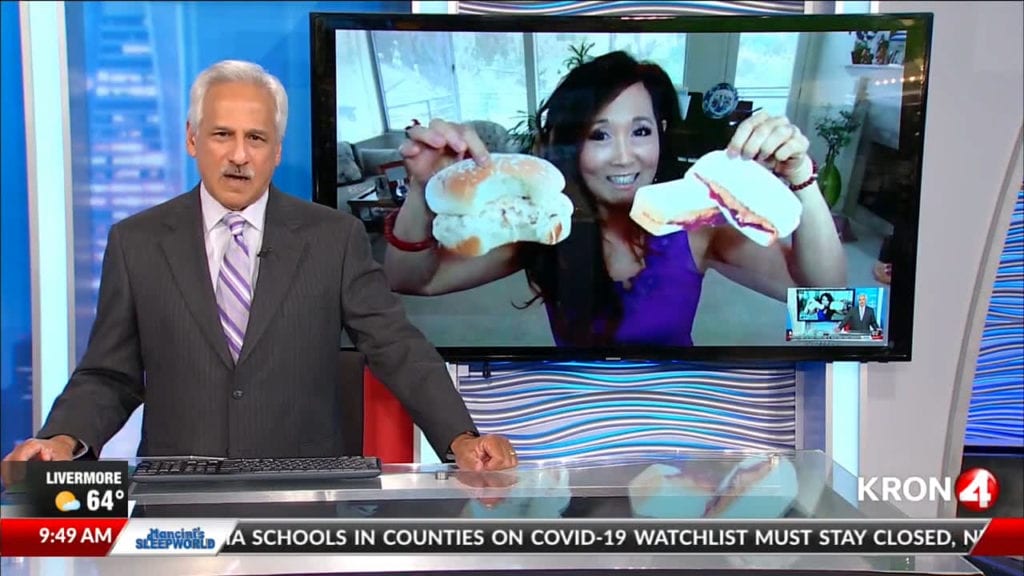
ANSWER: The chicken sandwich will cause exaggerated spikes in blood sugar and fat in the blood.
Why the Chicken Sandwich Spikes Blood Sugar
Studies show that the amount and quality of fat in the diet affects blood glucose control (insulin sensitivity).
Saturated fats found in meat, dairy, eggs, and tropical oils caused the following:
1. Accumulation of fat in muscle cells.
Studies show saturated fats in skeletal muscle (think “marbling” like that in a fatty ribeye steak) triggers insulin resistance, the underlying cause of pre-diabetes and type 2 diabetes.
Meat eaters accumulated more intramuscular fat than vegans.
Studies show a correlation between saturated fat buildup in muscles and insulin insensitivity or “insulin resistance”.
The whole food, plant-based lifestyle protects the cardiovascular system, contains less fat within the muscle cells, and has better functioning beta-cells.
Your beta cells are in the pancreas and produce and secrete insulin.
2. Oxidative stress (think of this as “rusting” cells).
Post-meal blood glucose and fat spikes increase in direct proportion to oxidative stress. More oxidation means there’s more inflammation.
3. Free radicals (scavengers in the body that damage cells, proteins, and DNA).
The higher the blood sugar spikes, more free radicals are produced and circulate throughout your body looking for opportunities to cause cellular damage
4. Inflammation. Fat cells filled with saturated fat produce an inflammatory response.
Saturated fat causes anti-inflammatory HDLs (good cholesterol) become pro-inflammatory — that is, they do not suppress the inflammation-promoting molecules.
Eating a fatty meal consisting of saturated fat caused a pro-inflammatory response and blood to thicken and slow down like sludge. See Can Just One Fatty Meal Be All That Bad?
These reactions occur in just one to four hours after eating a meal.
If you repeat the pattern of eating saturated fats throughout the day, you’re on course for not only an out-of-control immune response to COVID-19. but chronic inflammatory diseases, e.g., heart disease, diabetes, and Alzheimer’s.
Why the PB&J Sandwich Blunts Blood Sugar
It’s due to monounsaturated fats, antioxidants, soluble fiber, resistant starches, and vinegar
1. Monounsaturated Fat (peanut butter):
When monounsaturated fats are stored, they are more likely to be stored without the toxic inflammatory effects like those that occur with saturated fats.
Substituting monounsaturated fats (MUFA) for saturated fats can improve insulin action and blunt blood sugar spikes.
Foods high in MUFA’s include:
- Avocado oil, 1 tablespoon – 9.9 g
- Extra virgin olive oil, 1 tablespoon – 9.9 g
- Almonds, 1 oz – 9.1 g (23 whole kernels)
- Peanuts, 1 oz – 7.0 g (35 nuts)
- Cashews, 1 oz – 6.8 g (18 kernels)
- Pistachios, 1 oz – 6.6 g (49 kernels)
- Pumpkin seeds, 1 oz – 4.5 g (1/4 cup)
- Pepitas, 1 oz – 4.0 g (1/4 cup)
- Sunflower seeds, 1 oz (1/4 cup) – 3.0 g
- Avocado, 1 oz – 2.8 g (~1/5 of a medium avocado)
2. Antioxidants (all-fruit strawberry jam):
Studies show a diet high in antioxidant-rich, anti-inflammatory whole (minimally processed), high-fiber plant foods blunt the post-meal increases in sugar, fat, inflammation, AND excess free radicals. These foods include:
- Fruits (especially berries, dates)
- Vegetables
- Intact whole grains (oats, barley, farro) — “intact grains” where the whole grain is still intact and not pulverized into a flour
- Legumes (beans, lentils, peas)
- Nuts
3. Soluble Fiber (e.g., oats, beans, berries, barley, onions, yams):
Soluble fiber binds with water and food becomes very viscous which slows down digestion.
The good gut bacteria feeds on soluble fiber (prebiotics), which has been linked to increased insulin sensitivity.
See KRON 4 segment: Why Gut Health Matters. Read more on soluble fiber basics here.

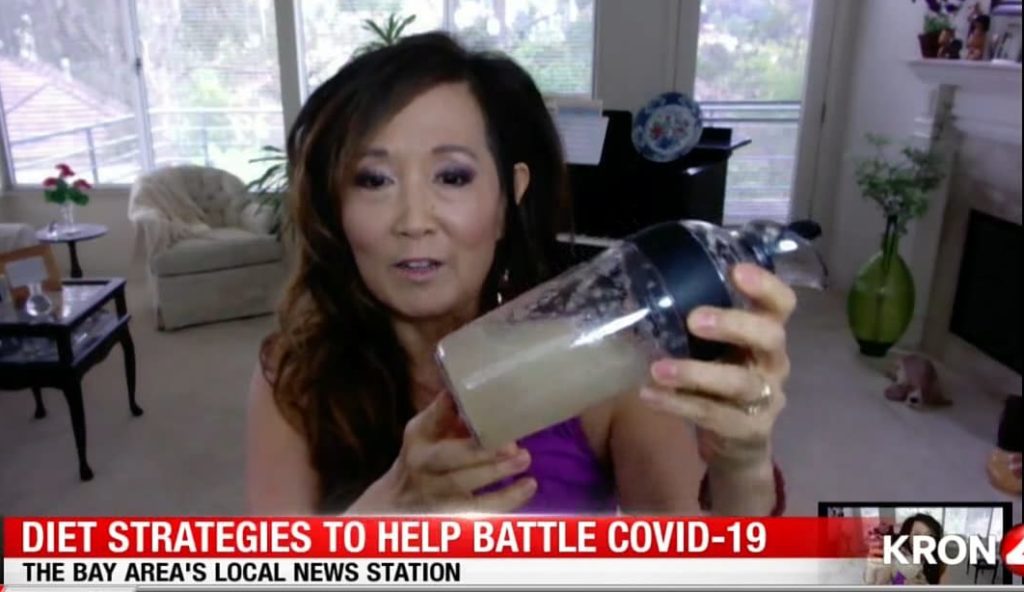
4. Resistant Starch – Resistant starches are carbohydrates that resist digestion in the small intestine, so they do not raise blood sugar. They travel intact to the large intestine where they ferment and feed the good gut bacteria.
- Plantains, green bananas
- Legumes (beans, peas, lentils) – white beans and lentils are especially high in resistant starch
- Whole grains
- Cooked and cooled carbohydrates like rice, pasta, potatoes, beans
5. Vinegar – Studies have shown that eating 1-1/2 tablespoons of vinegar with a meal improved insulin sensitivity after a meal.
Vinegar is made from pressing and fermenting plants, e.g., apples for apple cider vinegar, grapes for balsamic red wine vinegars, rice for rice vinegar, raspberries for raspberry vinegar.
A balsamic dressing on your salad or a potato salad made with a vinaigrette instead of mayonnaise would be a great option for blood sugar control.

![]() Karen’s Fit Tip: A whole food, plant-based diet improves blood sugar control and reduces inflammation — both of which are going to help lower your risk for underlying medical conditions, which will also improve your survival rate if you contract COVID-19.
Karen’s Fit Tip: A whole food, plant-based diet improves blood sugar control and reduces inflammation — both of which are going to help lower your risk for underlying medical conditions, which will also improve your survival rate if you contract COVID-19.

